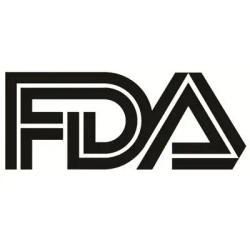
OR WAIT null SECS
Improving Understanding of Molluscum Contagiosum Treatment, with Nanette Silverberg, MD
In this interview at AAD 2025, Silverberg discusses important facts for dermatologists to know in the management of molluscum contagiosum.
At the 2025 American Academy of Dermatology (AAD) Annual Meeting in Orlando, Flordia, Nanette Silverberg, MD, spoke with the HCPLive editorial team about the biggest takeaways from her conference talk ‘What's New in Molluscum Contagiosum? Advances in Understanding and Treating Molluscipoxvirus.’
Silverberg—known for her work as the chief of pediatric dermatology for the Mount Sinai Health System in the Kimberly and Eric J. Waldman Department of Dermatology—was asked about her portion of the talk. She responded with some background on molluscum contagiosum and her rationale for pursuing the topic in this talk.
“The incredible rise that we've seen in molluscum since the 1990s is really a function of the rise in atopic dermatitis and atopy in the background population, which allows for kids to have a weakened skin barrier, to acquire molluscum, to have more molluscum, [and to be] more contagious,” Silverberg said. “And concurrently with that, we've also adopted a plan in the US to promote swimming and learning to swim at a fairly young age, and that also increases exposures.”
Silverberg was also asked about her talk itself and some highlights of what she covered in her session at AAD regarding molluscum and its diagnosis and management.
“I'm going back and exploring things like why people have molluscum,” Silverberg explained. “I always said molluscum was the scourge of Brooklyn when I was training as a resident, and then it was the scourge of Chicago when I was a fellow, and then I was back to Manhattan and it was the scourge of Manhattan. The fact is that it's everywhere in the US, and children of all races and ethnicities are experiencing molluscum. It can be a marker of certain types of disparity, and particularly worldwide, as there have been outbreaks in indigenous populations that don't have running water, live in poverty, and live in close quarters…But, you know, it is ubiquitous virus.”
Silverberg continued her discussion of the takeaways from her presentation, highlighting ways that different age groups contract the condition.
“There's really no age group that's immune and you can get it from the cradle to the grave,” Silverberg said. “Quite literally, you can be born with molluscum. This year, we did a systematic review with some of our our students, looking at common shared risk factors for molluscum and warts. Skin-to-skin contact is always number 1. But sharing fomites, shoes, clothing, towels, bath sponges, razors, brushes, combs, bar soap, and things like that can transfer. Close contact activities like wrestling or massages…We've talked about public swimming pools. You have to be in it to win it.”
Silverberg noted that individuals who are too poor to participate in swimming sports may not have access and will, consequently, not face this type of transference. That being said, she added that it is a mechanism for many kids.
“The main thing that we're seeing now as an increase is the history of cutaneous illnesses that impair the skin barrier,” Silverberg said. “Filaggrin defects, which are a weakness in the skin barrier that's genetic, have been associated with very severe atopic dermatitis. Atopic dermatitis and lots of lots of immunodeficiencies have been described [as situations in which] kids catch and have molluscum that spreads. Tropical climates can do it. Of course, we've seen other situations where kids, let's say, who have organ transplantations or bone marrow transplantations are renal suppressed and can catch it, so we have a lot of common risk factors for warts and molluscum. Part of why we looked at that is to think about commonly addressing these risk factors together.”
For additional information on these takeaways, view the full video interview with Silverberg posted above.
The quotes in this interview summary were edited for clarity.
Silverberg has previously reported grants from Incyte and speaking/advisory fees from Regeneron, Sanofi, Verrica, and Novan.
Related Content:


